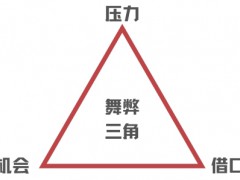? 全球伴生氣放空燃燒約占油氣行業二氧化碳總排放量的30%,使其成為全球脫碳努力的主要目標之一。
? 去年全球伴生氣放空燃燒量創下10年來新低,雖然這一下降在很大程度上是由于疫情對需求的影響,但伴生氣放空燃燒的改善似乎將持續下去。
? 10個國家占全球上游伴生氣放空燃燒量的70%以上,因此,針對這些國家并確保這些國家進行監管,可能會對碳排放產生重大影響。
據美國油價網報道,挪威著名能源研究和商業情報公司雷斯塔能源公司(Rystad)的研究顯示,由于生產率提高、環保意識增強,以及Covid-19封鎖和旅行限制導致的燃料需求下降,去年全球上游行業的伴生氣放空燃燒量降至10年來最低水平。 據估計,去年全球上游行業排放了約2.76億噸二氧化碳,比2020年的2.83億噸略有下降,自Covid-19疫情大流行以來繼續呈下降趨勢。
美國頁巖行業的改善是伴生氣放空燃燒量下降的重要驅動因素。 由美國主導的致密油行業在去年排放了大約1200萬噸二氧化碳,不到2019年3000萬噸的一半。 從氣候角度來看,非洲海上市場伴生氣放空燃燒狀況的改善尤其明顯。非洲大陸石油產量的下降,以及成熟海上油井產量的減少,幫助降低了非洲伴生氣放空燃燒對環境的影響。
但是,由于疫情相關限制的放松,全球化石燃料需求增加,供應仍然緊張,今年全球伴生氣放空燃燒量可能出現反彈。
Rystad能源分析師Dzenana Tiganj說:“在石油和天然氣行業中,伴生氣放空燃燒占二氧化碳總排放量的30%,近幾年來,由于其對環境的影響,這種做法受到了越來越多的審查。即使在Covid-19大流行和供應下降的背景下,仍然有跡象表明,最新的改善可能會部分持續。”
許多勘探和生產公司都制定了雄心勃勃的目標來終止伴生氣放空燃燒。通過衛星數據估計,全球減少伴生氣放空燃燒的努力沒有看到任何顯著的效果,因為伴生氣放空燃燒活動在過去10年里一直相對平穩。 然而,2020年標志著朝著正確方向邁出了一步,去年的估計數據表明這一趨勢仍在繼續。
頁巖行業伴生氣放空燃燒量的下降勢頭是近幾年來最顯著的。以每桶油當量計算,致密油伴生氣放空燃燒量從2019年到2021年下降了60%。
鑒于2019年至2021年的全球趨勢明顯下降,將伴生氣放空燃燒量與2019年新冠肺炎疫情大流行前的水平進行比較,可以有趣地了解全球上游部門的地區細分。 非洲、北美、澳大利亞和歐洲的伴生氣放空燃燒量持續減少,而其他地區保持不變。
非洲繼續下降趨勢,海上部分有重大進展。2019年至2021年,非洲大陸海上伴生氣放空燃燒產生的二氧化碳排放量減少了400萬噸。 這一趨勢主要是由于成熟資產的廢棄、成熟資產的產量下降以及欠成熟油氣田的產量增加。
隨著2019年至2020年的產量下降,僅安哥拉和尼日利亞兩國的海上伴生氣放空燃燒就減少了200多萬噸二氧化碳的排放,并在去年繼續保持平穩發展。去年阿爾及利亞的總燃除量和每桶油當量的燃除量也大幅下降。 預計減少的二氧化碳總量為300萬噸,減少強度從18公斤每桶油當量下降到13公斤每桶油當量。
自2019年以來,北美一直在推動全球伴生氣放空燃燒量的下降,頁巖行業的重點是提高作業效率。美國繼續努力消除頁巖生產現場的常規燃除,運營商注重更好的生產實踐和基礎設施的改進。 衛星數據顯示,美國的伴生氣放空燃燒量大幅減少,伴生氣的現場利用率或改為用于其他目的持續增加。與2019年的68%相比,去年美國頁巖生產的伴生氣燃燒量約占北美上游的38%。
考慮到包括頁巖在內的所有供應部分,去年美國繼續表現良好,比2020年減少了400多萬噸二氧化碳,總燃除強度估計下降了30%,到2021年達到1公斤/每桶油當量。
歐洲近海地區的常規燃除量持續減少,英國是關鍵推動國,2019 - 2021年英國伴生氣放空燃燒量減少了近40%。主要運營商,如英國石油公司,已經在油氣井啟動階段實施了改進措施,并優化了伴生氣放空燃燒的設定值,以符合環境目標并提高燃料效率。
雖然地區發展表明全球在多個方面努力減少伴生氣放空燃燒,但去年全球上游伴生氣放空燃燒的主要貢獻者仍然是伊拉克、尼日利亞、美國、阿爾及利亞、墨西哥,它們加起來占全球上游伴生氣放空燃燒總量的70%以上。
李峻 編譯自 美國油價網
原文如下:
Gas Flaring Fell To The Lowest Level In A Decade
· Gas flaring represents roughly 30% of the total carbon dioxide emissions produced by the oil and gas industry, making it one of the key targets of decarbonization efforts in the world.
· Gas flaring hit a decade-low in 2021 and, while a large portion of that decline was due to the impact of Covid on demand, it looks like a lot of the flaring improvements will be sustained.
· Ten countries make up over 70% of global upstream flaring, so targeting these areas and ensuring they are regulating could significantly impact carbon emissions.
Gas flaring activity in the global upstream sector sunk last year to its lowest level in a decade due to improved productivity, increased environmental awareness, and lower fuel demand caused by Covid-19 lockdowns and travel restrictions, Rystad Energy research shows. Estimates show upstream flaring emitted about 276 million tonnes of carbon dioxide (CO2) in 2021, down marginally from 283 million tonnes in 2020, continuing a downward trend since the onset of the Covid-19 pandemic.
Improvements in the US shale sector are a significant driver of the decline in flaring activity. The tight oil sector, dominated by the US, flared the equivalent of about 12 million tonnes of CO2 in 2021, less than half of the 30 million tonnes seen in 2019. Improvements in the offshore market in Africa are particularly positive from a climate perspective, including significant reductions in Algeria, both in upstream flaring activity and performance. A continental production decline, as well as reduced output from mature offshore wells, helped lower Africa’s environmental impact associated with flaring.
A rebound in flaring activity is, however, likely this year as global fossil fuel demand increases with the relaxation of Covid-19-related restrictions, and supply remains tight due to sanctions on Russian fuel over its invasion of Ukraine in late February.
“Flaring represents about 30% of the total carbon dioxide emissions produced by the oil and gas industry, and the practice has come under increased scrutiny over its environmental impact in recent years. Even with the backdrop of the pandemic and supply decline, there are still signs that the latest improvements could be partially sustained,” says Rystad Energy analyst Dzenana Tiganj.
Many exploration and production (E&P) players have set ambitious targets to end flaring, and for many fields reducing flaring remains the first step on the abatement journey. Through satellite data estimation, Rystad Energy detects and tracks flaring activity globally for all oil and gas fields. Satellite analysis shows that global flaring reduction efforts have not seen any significant effect as flaring activity has remained relatively flat for the past 10 years. However, 2020 marked a step in the right direction, and the 2021 estimates suggest the trend is continuing.
The shale sector's downward momentum of flaring activity is the most striking reduction in recent years. On a per barrel of oil equivalent (boe) basis, tight oil flaring has dropped by 60% from 2019 to 2021. Other onshore production flaring continues to stand out, with flaring intensity exceeding 7 kilograms of CO2 per boe in 2021. The other supply segments show very marginal, almost flat developments.
Regional breakdown
With a clear global downward trend from 2019 to 2021, comparing flaring volumes to pre-pandemic 2019 levels provides an interesting look at the regional differences in the upstream sector. Africa, North America, Australia, and Europe show persistently decreasing flaring activity, whereas other regions remain flat.
Africa continues the downward trend with significant developments in the offshore segment. The continent’s CO2 emissions from offshore flaring decreased by 4 million tonnes from 2019 to 2021. This trend is primarily driven by the abandonment of mature assets, production declines for mature assets, and increased production from less mature fields.
With production declining from 2019 to 2020, Angola and Nigeria alone reduced offshore flaring volumes by over 2 million tonnes of CO2 and continued with a flat development into 2021. Algeria also delivered significant decreases in overall volumes and flaring per boe in 2021. The estimated reduction totaled 3 million tonnes of CO2, and the intensity dropped from almost 18 kilograms per boe to 13 kilograms per boe. This marks a significant shift for a country where the norm has been a steady increase in flaring over the last decade.
North America has been driving global flaring decreases from 2019 onwards, with shale focusing on operational efficiency improvements. The US continues to make up ground with persistent efforts to eliminate routine flaring at shale production sites and operators communicating better production practices and infrastructural improvements. Satellite data shows substantially decreased flaring volumes and increased on-site utilization or redirection of gas for other purposes. US shale production contributed approximately 38% of upstream flaring in North America in 2021, compared to 68% in 2019.
Considering all supply segments, including shale, the US continued to perform well throughout 2021, with a decrease of more than 4 million tonnes of CO2 from 2020 and an overall reduction of flaring intensity by an estimated 30%, reaching 1 kilogram per boe in 2021.
Offshore Europe continues to decrease routine flaring, with the UK being a key driver, reducing flaring emissions by almost 40% from 2019 to 2021. Key operators, such as UK major BP, have implemented improved practices at the well start-up phase and optimized flaring set points to comply with environmental targets and increase fuel efficiency.
While regional developments showcase the global effort to reduce flaring on multiple fronts, the major contributors to global upstream flaring remain the same – namely Iraq, Nigeria, the US, Algeria, Mexico– which combined represent over 70% of global upstream flaring emissions.
免責聲明:本網轉載自其它媒體的文章及圖片,目的在于弘揚石化精神,傳遞更多石化信息,宣傳國家石化產業政策,展示國家石化產業形象,參與國際石化產業輿論競爭,提高國際石化產業話語權,并不代表本網贊同其觀點和對其真實性負責,在此我們謹向原作者和原媒體致以崇高敬意。如果您認為本站文章及圖片侵犯了您的版權,請與我們聯系,我們將第一時間刪除。







